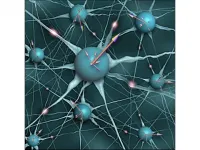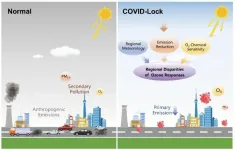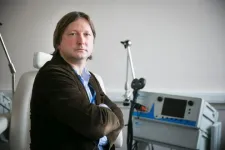(Press-News.org) Swapping the car for walking, cycling and e-biking even just one day a week makes a significant impact on personal carbon emissions in cities.
'Active transport' - cycling, e-biking or walking - can help tackle the climate crisis according to a new study led by the University of Oxford's Transport Studies Unit and including researchers from Imperial's Centre for Environmental Policy as part of the EU-funded project PASTA: Physical Activity Through Sustainable Transport Approaches.
Meeting greenhouse gas emissions reduction targets requires a significant move away from motorised transport. The team found that shifting to active transport could save as much as a quarter of personal carbon dioxide (CO2) emissions from transport.
Published in the journal Global Environmental Change, this is the first study of the carbon-reducing impact of city-based lifestyle changes, and reveals that increases in active mobility significantly lower carbon footprints, even in European cities that already have a high incidence of walking and cycling.
Co-author Dr Audrey de Nazelle, from the Centre for Environmental Policy at Imperial, said: "Our findings suggest that, even if not all car trips could be substituted by bicycle trips, the potential for decreasing emissions is huge.
"This is one more piece of evidence on the multiple benefits of active travel, alongside our previous studies showing cycling is the best way to get around cities for both physical and mental health, and that promoting cycling helps tackle obesity. This should encourage different sectors to work together to create desirable futures from multiple health, environmental and social perspectives."
Small swaps, big impact
The study followed nearly 2,000 people in seven European cities (Antwerp, Belgium; Barcelona, Spain; London, UK; Orebro, Sweden; Rome, Italy; Vienna, Austria; Zurich, Switzerland), collecting data on daily travel behaviour, journey purpose, as well as information on where their home and work or study location was, whether they have access to public transport, and socio-economic factors.
The team performed statistical modelling of the data to assess how changes in active mobility, the 'main mode' of daily travel, and cycling frequency influenced mobility-related CO2 emissions over time and space.
Lead researcher Dr Christian Brand , from the University of Oxford, said: "We found that those who switch just one trip per day from car driving to cycling reduce their carbon footprint by about 0.5 tonnes over a year, representing a substantial share of average per capita CO2 emissions.
"If just 10% of the population were to change travel behaviour, the emissions savings would be around 4% of lifecycle CO2 emissions from all car travel."
The largest benefits from shifts from car to active travel were for business travel, followed by social and leisure trips, and commuting to work or place of study. These results also showed that those who already cycled had 84% lower CO2 emissions from all daily travel than non-cyclists.
Doing something about climate change
For the cities in this study, average per capita (per person) CO2 emissions per year from transport (excluding international flights and shipping) ranged between 1.8 tonnes in the UK to 2.7 tonnes in Austria. According to the Global Carbon Atlas, average per capita CO2 emissions from all activities were eight tonnes per year in the UK.
Dr Brand said: "A typical response to the climate crisis is to 'do something', such as planting more trees, or switching to electric vehicles. While these are important and effective, they are neither sufficient nor fast enough to meet our ambitious climate targets.
"Doing more of a good thing combined with doing less of a bad thing - and doing it now - is much more compliant with a 'net zero' pathway and preserving our planet's and our own futures. Switching from car to active mobility is one thing to do, which would make a real difference, and we show here how good this can be in cities."
Multiple benefits
The team say this will not only be good for the climate, but also for reducing social inequalities and improving public health and quality of urban life in a post-COVID-19 world.
Dr de Nazelle said: "To improve active travel take-up, cities across the world will need to increase investment in high-quality infrastructure for pedestrians and cyclists and incorporate policy and planning concepts that require a fairly radical rethink of our cities.
"This is in turn likely to reduce inequalities, because the concepts involve mixing different population groups rather than maintaining the model of residential zoning by socioeconomic status currently used."
INFORMATION:
Molecular iodine, a major emission from the ocean, can quickly convert to iodic oxoacids even under weak daylight conditions. These oxoacids lead rapidly to aerosol particles that significantly affect climate and human health.
Iodine-containing vapors that are emitted from oceans are a major source of aerosol particles. "Despite their importance to the climate, the formation of marine particles has been poorly understood," says Siddharth Iyer, Postdoctoral Researcher in Aerosol Physics Laboratory at Tampere University.
In this research, the formation of aerosol particles form from iodine-containing vapours under marine boundary layer conditions were studied. The experiments were carried out in the ultra-clean CLOUD chamber in CERN, where the nucleation and growth rates as well as ...
Cells, like humans, cast votes to make decisions as a group. But how do they know what to vote for? Researchers at the Francis Crick Institute and King's College London have uncovered how cells actively seek information in order to make faster and better collective decisions to coordinate the growth of new blood vessels. This provides a new basis for understanding intelligence in cells.
The process of how cells precisely and quickly coordinate action when they create new tissue is complex. They must collectively decide which cells should take on specific jobs and ensure that not too ...
Is a quantum machine really more efficient than a conventional machine for performing calculations? Demonstrating this 'advantage' experimentally is particularly complex and a major research challenge around the world1. Scientists from the CNRS2, the University of Edinburgh (Scotland) and the QC Ware, Corp., (France and USA) have just proved that a quantum machine can perform a given verification task in seconds when the same exercise would take a time equivalent to the age of the universe for a conventional computer. For this demonstration, they combined a complex interactive algorithm that solves a certain type of mathematical problem with limited information and a simple experimental photonics ...
Goal 7 of the Sustainable Development Goals (SDGs) aims to ensure access to affordable, reliable, sustainable and modern energy for all by 2030. Yet according to new research by Copenhagen Business School the poor planning and execution of decarbonisation strategies in emerging markets challenges the aims of Goal 7.
"In the effort to produce renewable energy and decarbonise their economies, emerging countries have neglected the effect on marginalised populations, which could ultimately prove unsustainable for all," says Assistant Professor Jacobo Ramirez from the ...
An important class of challenging computational problems, with applications in graph theory, neural networks, artificial intelligence and error-correcting codes can be solved by multiplying light signals, according to researchers from the University of Cambridge and Skolkovo Institute of Science and Technology in Russia.
In a paper published in the journal Physical Review Letters, they propose a new type of computation that could revolutionise analogue computing by dramatically reducing the number of light signals needed while simplifying the search for the best mathematical solutions, allowing for ultra-fast optical computers.
Optical or ...
A way of using machine learning to more accurately identify patients with a mix of psychotic and depressive symptoms has been developed by researchers at the University of Birmingham.
Patients with depression or psychosis rarely experience symptoms of purely one or the other illness. Historically, this has meant that mental health clinicians give a diagnosis of a 'primary' illness, but with secondary symptoms. Making an accurate diagnosis is a big challenge for clinicians and diagnoses often do not accurately reflect the complexity of individual experience or indeed neurobiology.
Clinicians diagnosing psychosis, for example, would frequently regard depression as a secondary illness, with implications for treatment decisions which focus more on ...
The outbreak of COVID-19 raised a question about the relationship between anthropogenic emissions and air pollution, which has aroused heated discussion. Research on air-quality changes caused by the lockdowns in different areas shows similar substantial reductions in primary emissions. However, regional disparities exist in responses of secondary pollutants to emissions reduction, especially fine particulate matter and ozone (O3).
Professor Ding Aijun and his team from Nanjing University explored global air-quality changes during COVID-19 lockdowns and regional disparities in O3 responses to emission reductions. They integrated multiple observational datasets, including global air quality ...
In a new study published in Journal of Extracellular Vesicles, Chen-Yu Zhang's group and Antonio Vidal-Puig's group at University of Cambridge report that pancreatic β cells secrete miR-29 family members (miR-29a, miR-29b and miR-29c) in response to high levels of free fatty acids (FFAs). These β cell-derived miR-29s are delivered to the liver, promoting insulin resistance and enhancing hepatic glucose output.
Over 100 years after insulin was discovered, it was believed that pancreatic β cells only secreted a single hormone--insulin. Pancreatic β cell-derived insulin regulates glucose homeostasis by binding with the insulin receptors located in the liver, skeletal ...
The scientists of Tomsk Polytechnic University jointly with the colleagues from Keysight company have conducted an experiment with an electron beam at the TPU microtron to study a super-radiant regime that occurs when radiation is generated by a train of electron bunches. The research findings obtained by a high-precision measurement of a spectral line width proved that about 8,000 electron bunches in a super-radiant regime form monochromatic Cherenkov radiation. This experiment was conducted for the first time. The fundamental research findings are published in the Scientific Reports academic journal (IF: 4.120, Q1) and can be used for further research on the new sources of radiation in the terahertz range.
A super-radiant regime is a coherent ...
Scientists at HSE University have learned that disagreeing with the opinion of other people leaves a 'trace' in brain activity, which allows the brain to later adjust its opinion in favour of the majority-held point of view. The article was published in Scientific Reports.
We often change our beliefs under the influence of others. This social behavior is called conformity and explains varios components of our behaviour, from voting at elections to fashion trends among teenagers.
Brain research has recently well informed about short-term effects of social influence on decision making. If our choice coincides with the point of view of the people who are important to us, this decision is reinforced in ...




